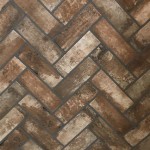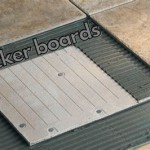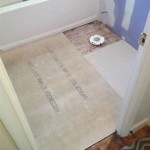What Is The Best Way To Remove Grout From Floor Tiles?
Removing grout from floor tiles is a common task undertaken during renovation projects, tile repairs, or when aiming for a fresh aesthetic. The best method for grout removal depends on several factors, including the type of grout, the condition of the tiles, and the desired outcome. Selecting the appropriate technique and tools is crucial to avoid damaging the tiles and ensuring a clean, professional finish. This article explores various methods and considerations for effectively removing grout from floor tiles.
Before embarking on any grout removal project, assessing the situation is paramount. Consider the type of grout used. Cementitious grout, epoxy grout, and sanded or unsanded grout each require different approaches. Cementitious grout, being the most common, is generally easier to remove compared to the more resilient epoxy grout. The age and condition of the grout are also important. Older, crumbly grout is typically simpler to extract than newer, well-adhered grout. Examining the tiles themselves is also necessary. Certain tile materials, such as natural stone or softer ceramic, are more susceptible to scratching and chipping, requiring extra caution during the removal process.
Safety precautions are essential when handling tools and working with grout. Grout dust can be irritating to the eyes and respiratory system, so wearing safety glasses and a dust mask or respirator is highly recommended. Gloves should also be worn to protect the hands from potential irritants and sharp edges. Adequate ventilation of the work area is important to minimize exposure to dust and fumes. Before starting any removal process, protect surrounding surfaces with drop cloths or plastic sheeting to prevent damage from debris and spills.
Mechanical Grout Removal Techniques
Mechanical grout removal involves using tools to physically break down and extract the grout. This is often the most effective method for removing large quantities of grout or dealing with particularly stubborn grout lines. Several tools are available for mechanical grout removal, each with its own advantages and disadvantages.
One common tool is a manual grout saw. These saws feature a carbide blade designed to grind away grout. Manual grout saws are relatively inexpensive and offer good control, allowing for precise removal. However, they can be labor-intensive, especially for large areas. When using a manual grout saw, it's crucial to maintain a consistent pressure and angle to avoid chipping the tile edges. Several passes may be required to remove the grout completely. It is generally recommended to follow the grout line with the saw multiple times, gradually deepening the groove until the grout is sufficiently weakened.
Power tools, such as oscillating multi-tools and rotary tools, can significantly speed up the grout removal process. Oscillating multi-tools, fitted with a grout removal blade, vibrate at high speeds to cut through grout. These tools offer good precision and can be used in tight spaces. Rotary tools, such as Dremels, can also be equipped with grout removal attachments. These tools are particularly useful for removing small amounts of grout or for detail work. When using power tools, it's important to select the appropriate speed setting and apply consistent pressure. Avoid pressing too hard, as this can overheat the blade and damage the tiles. The user must also carefully control the depth of the cut to prevent scratching or gouging the tile surfaces. Dust collection attachments are highly recommended for power tools to minimize airborne particles.
Grout removal blades come in various shapes and materials. Carbide-tipped blades are generally more durable and effective for removing hard grout, such as epoxy grout. Diamond-tipped blades offer even greater durability and are suitable for removing very hard grout or for working with delicate tiles. Selecting the right blade for the job is crucial to ensure efficient and safe grout removal.
Regardless of the mechanical tool employed, it is important to exercise caution and patience. Rushing the process can lead to mistakes and damage. Always follow the manufacturer's instructions for the tool and wear appropriate safety gear.
Chemical Grout Removal Techniques
Chemical grout removers offer an alternative to mechanical methods. These products typically contain acids or solvents that dissolve or soften the grout, making it easier to remove. Chemical grout removers are often less labor-intensive than mechanical methods, but they can be more time-consuming, as they require soaking time for the chemicals to work effectively.
Before using any chemical grout remover, it's crucial to test it on an inconspicuous area of the floor to ensure it doesn't damage or discolor the tiles. Follow the manufacturer's instructions carefully, paying attention to the recommended application time and safety precautions. Chemical grout removers can be corrosive and irritating, so wearing gloves, eye protection, and a respirator is essential. Proper ventilation is also vital to avoid inhaling fumes.
Application methods vary depending on the product. Some chemical grout removers are applied directly to the grout lines, while others require soaking a cloth or sponge and applying it to the grout. Allow the remover to sit for the recommended time, typically 15-30 minutes, to allow it to penetrate and soften the grout. After the soaking time, use a scrub brush or grout scraper to remove the softened grout. Multiple applications may be necessary for stubborn grout.
Neutralizing the chemical remover after use is important to prevent further damage to the tiles or surrounding surfaces. Follow the manufacturer's instructions for neutralization, which may involve rinsing the area with water and a neutralizing agent, such as baking soda.
While chemical grout removers can be effective, they are not always suitable for all types of grout or tiles. Epoxy grout, for example, is often resistant to chemical removers, requiring mechanical removal methods instead. Porous tiles, such as natural stone, may absorb the chemicals, leading to staining or discoloration. Always research the compatibility of the chemical remover with the specific grout and tile materials before use.
Alternative Grout Removal Methods
In addition to mechanical and chemical methods, other grout removal techniques may be employed, depending on the specific situation. These methods often involve a combination of physical and chemical actions to break down the grout.
One alternative method is to use steam. Steam cleaners can be effective for loosening grout, especially when combined with manual scrubbing. The high-temperature steam penetrates the grout, softening it and making it easier to scrape away. Steam cleaning is a relatively gentle method and is less likely to damage tiles compared to aggressive mechanical or chemical methods. However, steam cleaning may not be effective for very hard or old grout, and it requires a significant amount of time and effort.
Another approach involves using a combination of household products, such as vinegar and baking soda. Vinegar, being acidic, can help dissolve grout, while baking soda acts as a mild abrasive. Mixing vinegar and baking soda creates a paste that can be applied to the grout lines. Allow the paste to sit for several minutes, then scrub with a brush or sponge. This method is a more natural and less harsh alternative to chemical grout removers, but it may not be as effective for removing tough grout stains or large quantities of grout.
For small areas or hairline cracks, a grout pen can be used to cover up imperfections. Grout pens contain a colored sealant that matches the existing grout, providing a quick and easy fix. However, grout pens only offer a temporary solution and do not remove the existing grout. They are best suited for touch-ups and minor repairs.
Furthermore, in some cases, particularly with damaged or failing grout, a professional grout removal service might be the best option. Professionals have the experience, tools, and knowledge to remove grout effectively and safely, minimizing the risk of damage to the tiles. While professional services can be more expensive, they can save time, effort, and potential repair costs in the long run.
Regardless of the chosen grout removal method, meticulous cleaning of the area after removal is crucial. This involves removing all grout debris and dust and thoroughly cleaning the tiles. A wet/dry vacuum cleaner can be helpful for removing loose debris. The tiles should then be cleaned with a neutral pH cleaner to remove any remaining residue. Allowing the area to dry completely before applying new grout is important to ensure proper adhesion and prevent future problems.

How To Clean Grout Tips For Natural Stone Flooring Granite Gold

How To Remove Tile Grout Dex Flooring

Grout Haze And Tips To Remove It On Tile Floors Re A Floor Stone Restoration Cleaning Serving Novi Brighton Farmington Hills West Bloomfield Metro Detroit Areas

How To Clean Grout Tile Cleaning Tips Simply Spotless

Grout Removal Tips Learn From A Tiling Pro Tilersplace

How To Clean Floor Tile Grout Without Scrubbing Easy Guide

How To Get Rid Of Leftover Grout Haze Quickly And Easily The Creek Line House

Remove Grout From Ceramic Tile Protile Repair Tricks

The Tile Doctor Professional Grout Haze Remover 543314 24oz Home Depot

How To Clean Grout Without Damaging It Method
Related Posts








